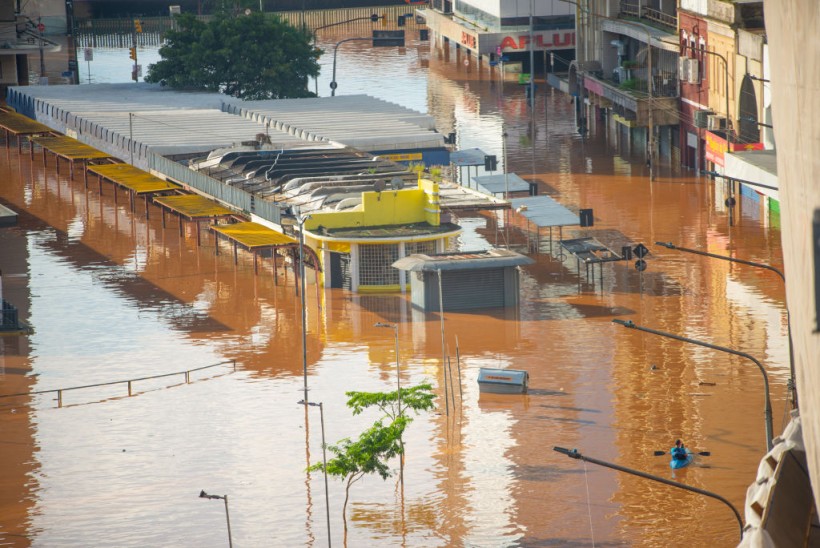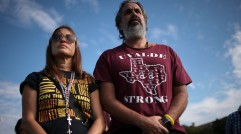Brazil Floods Death Toll Reaches 78, At Least 100 Still Missing

Severe floods in Brazil's southern Rio Grande do Sul state have left a trail of destruction, claiming the lives of at least 75 people over the past week, with another 103 individuals reported missing, as announced by local authorities on Sunday.
The relentless rains have also left 155 people injured and forced over 88 thousand residents from their homes, with approximately 16,000 seeking refuge in temporary shelter, AP News reports.
The Brazil floods have caused widespread devastation, resulting in landslides, submerged roads collapsed bridges, and disruptions to essential services such as electricity and communications.
Over 800,000 individuals lack clean water, worsening hardships in impacted areas.
Rescue efforts have been underway, with dramatic scenes of volunteers utilizing boats, jet skis, and even swimming to aid in evacuations.
Despite these efforts, the Brazil floods death toll continue to rise, with concerns mounting over the fate of the missing individuals and the extensive damage inflicted by the floods.
READ NEXT: Brazil Floods: Death Toll Reaches 39
President Lula Visits Affected Areas
Brazilian President Luiz Inacio Lula da Silva, accompanied by key members of his cabinet, arrived in Rio Grande do Sul on Sunday to assess the situation and coordinate rescue and reconstruction efforts with local authorities.
President Lula emphasized the need for swift action and pledged government support to address the crisis, according to Reuters.
Speaking at a press conference, President Lula described the situation as akin to a war scenario, underscoring the urgent need for post-disaster measures.
Volunteers and emergency responders have been working tirelessly to assist those affected, with numerous acts of heroism reported amidst the chaos.
The extent of the devastation has prompted comparisons to historic floods, with water levels surpassing records set during previous deluges.
Despite the challenges, President Lula expressed determination to mobilize resources and implement measures to mitigate the impact of the disaster.
Climate Change and Environmental Impact
The recent Rio Grande do Sul, Brazil floods are the latest in a series of environmental disasters to strike the region, with previous incidents occurring in July, September, and November 2023, leading to considerable loss of life and extensive devastation.
Climate experts attribute these extreme weather events to the influence of El Niño, a climate phenomenon characterized by fluctuations in ocean temperatures.
El Niño typically leads to intensified rainfall in southern Brazil, exacerbating the risk of flooding and landslides, Aljazeera noted.
This year, the effects of El Niño have been particularly pronounced, contributing to historic droughts in other parts of the country, such as the Amazon region.
The rise in both frequency and intensity of natural calamities underscores the pressing need for proactive measures to relieve the impacts of climate change.
Suely Araújo, a public policy coordinator at the Climate Observatory, emphasized the importance of adaptation strategies to mitigate the growing risks posed by extreme weather events.
The devastating floods in Rio Grande do Sul these incidents serve as a clear indication of the pressing necessity for coordinated action to address the challenges posed by climate change and safeguard vulnerable communities from future disasters.
As rescue and recovery efforts continue, attention must also be focused on long-term strategies to build resilience and mitigate the impact of environmental threats.
READ MORE: Brazil: Blaze Consumes Small Hotel, Resulting in 10 Deaths
This article is owned by Latin Post.
Written by: Ross Key
WATCH: Floods in southern Brazil kill at least 75 people over 7 days, 103 people missing - From Associated Press
Subscribe to Latin Post!
Sign up for our free newsletter for the Latest coverage!














